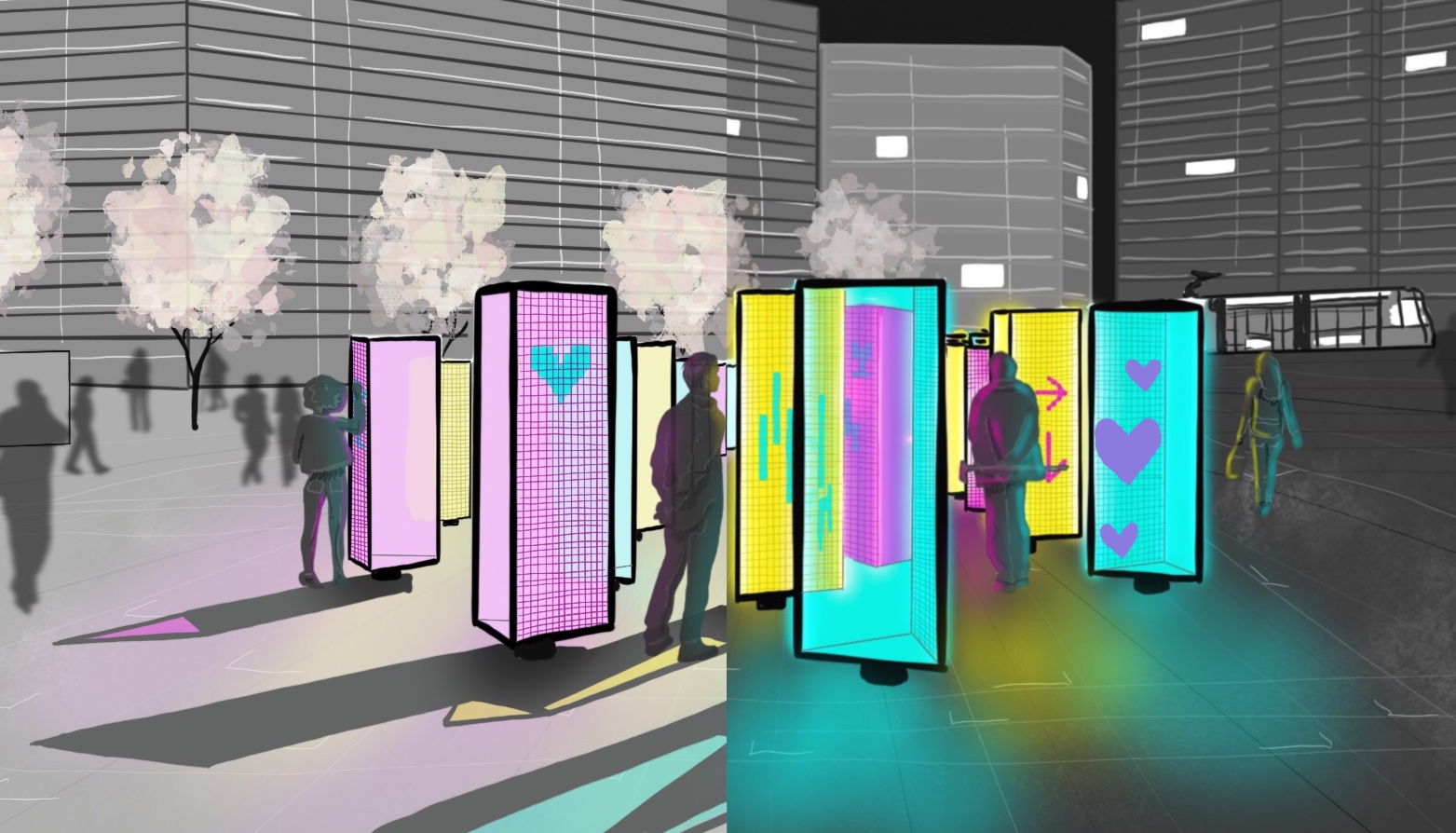Ephemeral Galleries

Category
Daylight investigations - Region 1: Western Europe.
Students
Manon Fontaine
Sarah Kennes
Maxime Mottet
Julie Demeulenaere
Teacher
Jean Luc Capron
School
Université catholique de Louvain
Country
Belgium
Download
Download ↓
The “Ephemeral Galleries” project is designed to activates the urban space through light shows and through the interaction it arouses with citizen. Day and night, the passers-by are attracted by the colorful reflections cast on the ground. Messages and drawings can also be composed to appear in an ephemeral way on one of the three sides of the prisms which are part the design. Whereas the two other sides let the light to be reflected and transmitted through a translucent and colored face. The selected colors are cyan, magenta and yellow, so that they create a subtractive synthesis. Neon lights placed in the ridges of the prism allow the installation to be enjoyed at night as well.
Thus, the multitude of facets of those prisms punctuate the journey of the user who once again appropriates the public space. The experience offered stimulates the senses, curiosity and interactions between peoples. The prisms rotate on themselves and allow the creation of endless combinations with the other devices and encourage one to open up to others to experience places in an even more enriching way.
The prisms are sized to the scale of the user in order to improve ergonomics. They are arranged in such a way that they multiplied all the possible combinations. The voids created between the surround prisms varies the feeling of partitioning.
The panel, which can display a message, is made up of five centimeters squares facets rotating around a vertical axis and are either colored or mirrored. These square surfaces are analogous to pixels and thus make it possible to reproduce numerous combinations of drawings and words.
During the day, natural light passes through the translucent colored panels and project their hue on the ground, while the sun’s rays are reflected on the mirrored facets of the prisms. These colored light effects allow the prisms to interact by reflecting sunlight on daytime, or at night, by creating a subtractive synthesis when the colored shadows overlap on the ground.

































